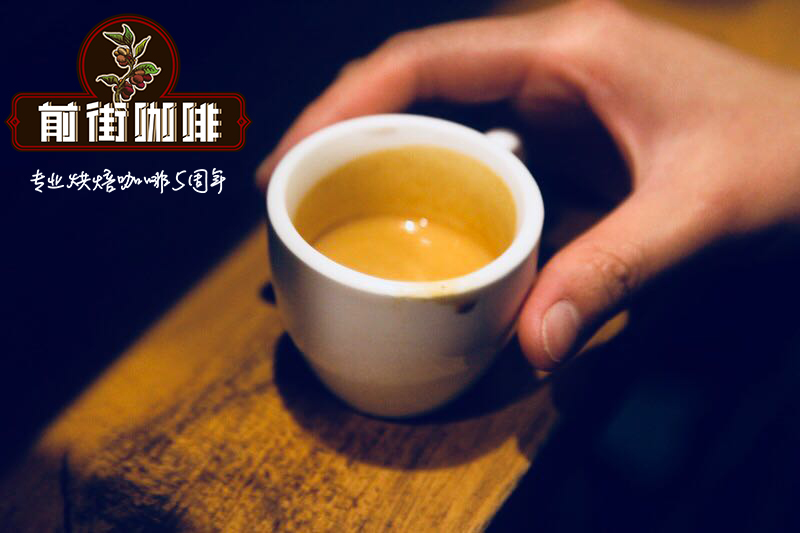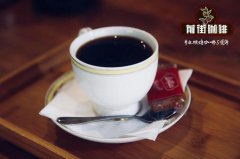How about Guatemalan coffee beans? Guatemalan coffee flavor and taste

Professional coffee knowledge exchange more coffee bean information please follow the coffee workshop (Wechat official account cafe_style)
Qianjie Coffee-Guatemala Coffee introduction
Guatemala is bordered by Mexico to the north, Honduras and El Salvador to the south, the Caribbean to the east and the Pacific Ocean to the west, with tropical rain forests, volcanic geology, plateau valleys and changeable microclimate. Guatemalan coffee once enjoyed a reputation as the best quality coffee in the world. The extra-hard coffee beans here are full-grained, delicious and balanced, and the coffee made with it is pure and rich.
There are few places in the world that offer a variety of high-quality coffee beans like those produced in Guatemala. The excellent quality of Guatemalan coffee beans is due to the unique conditions of their producing areas, including different climate change in each region, rich soil formed by volcanoes, abundant natural water resources, high-altitude mountains and shady and moist forests.
Coffee arrived in the United States through the Caribbean Islands between 1720 and 1730 and is the story of Mathieu de Clieu, the famous captain of the French army. After that, the Jesuit team spread coffee to other countries. During this period, Guatemala and the surrounding land belonged to the same Spanish territory. The earliest plantations were planted around 1770. At that time, other crops used as sources of pigment were at the core of the colonial economy.
According to altitude, there are three main areas of coffee production in Guatemala, which affects the quality and flavor of each cup. The first is a low band (760m-1070 m), with high growth rate, low acidity and soft taste. The second is the middle area (1070-1200 m), with average acidity and taste. Finally, there is the height area (1300-2000 meters), with high acidity and rich flavor.
There are seven main coffee producing areas in Guatemala: Antigua, Koban, Attland, Freihanes, Orient and San Marco.
The four producing areas of Antigua, Attland, San Marco and Frehanes are volcanic rocks. Several other producing areas belong to non-volcanic highland or tropical rain forest climate.
The Antigua region of Guatemala, in particular, produces the best coffee in the country. The coffee in Andiga area is known as "coffee aristocrat".
Antigua is characterized by three spectacular active volcanoes, rich volcanic soil, low temperatures, strong sunlight and cool night winds.
It is understood that there is a volcanic eruption in Antigua every 30 years or so, and volcanoes can bring more nitrogen to the land. Coupled with its own climatic conditions, Antigua is more suitable for growing coffee.
The coffee produced in this area is born at a height of 1524 meters, and the beans not only have a smooth surface, high hardness and good quality, but also taste smooth and slightly charcoal in aromatic alcohol, like the sweetness of chocolate mixed with smoke.
Because of this unique charcoal-burning incense, Antigua coffee is also known as "cigarette coffee" with a more full-bodied, sour and sweet combination, coupled with a trace of smoky flavor, emphasizing its deep and mysterious. It is praised as the best and most unusual coffee in the world by coffee connoisseurs.
The production of a boutique coffee bean is not easy. Only by knowing the story behind the coffee can we make the coffee experience better.
Coffee farmers first pick every fruit of the coffee tree. These coffee farmers live in remote areas, usually in the mode of family work. Only this first step is very hard, so there is a certain reason why the price of boutique coffee is high.
The collected fruit will be poured into the screening pool, then packed in gunny bags and then back down the hill, and the reward will be calculated according to weight. Then these coffee fruits are washed and processed into real coffee beans.
END
Important Notice :
前街咖啡 FrontStreet Coffee has moved to new addredd:
FrontStreet Coffee Address: 315,Donghua East Road,GuangZhou
Tel:020 38364473
- Prev

Brief introduction of Ethiopian Red Cherry Coffee sharing of red cherry coffee
Professional coffee knowledge exchange more coffee bean information please follow the coffee workshop (Wechat official account cafe_style) Qianjie Coffee-Red Cherry Coffee introduction and tasting Yegashifi is affiliated to the Sidamo producing area, so it is separated out separately because of its unique flavor. In addition to the small town of Yega Xuefei, it also includes three by-products, such as Wenago, Kochere, Gelena and Abaya.
- Next

COE Cup of Excellence| COE Cup of Excellence Overview Cup of Excellence Competition Flow
Professional coffee knowledge exchange More coffee bean information Please pay attention to Coffee Workshop (Weixin Official Accounts cafe_style) Excellence Cup Overview Excellence Cup is the most prestigious competition and auction of high quality coffee Excellence Café stands up to scrutiny unmatched anywhere in the specialty coffee industry. Every year thousands of coffees are submitted to auction and sold at high prices.
Related
- Beginners will see the "Coffee pull flower" guide!
- What is the difference between ice blog purified milk and ordinary milk coffee?
- Why is the Philippines the largest producer of crops in Liberia?
- For coffee extraction, should the fine powder be retained?
- How does extracted espresso fill pressed powder? How much strength does it take to press the powder?
- How to make jasmine cold extract coffee? Is the jasmine + latte good?
- Will this little toy really make the coffee taste better? How does Lily Drip affect coffee extraction?
- Will the action of slapping the filter cup also affect coffee extraction?
- What's the difference between powder-to-water ratio and powder-to-liquid ratio?
- What is the Ethiopian local species? What does it have to do with Heirloom native species?

